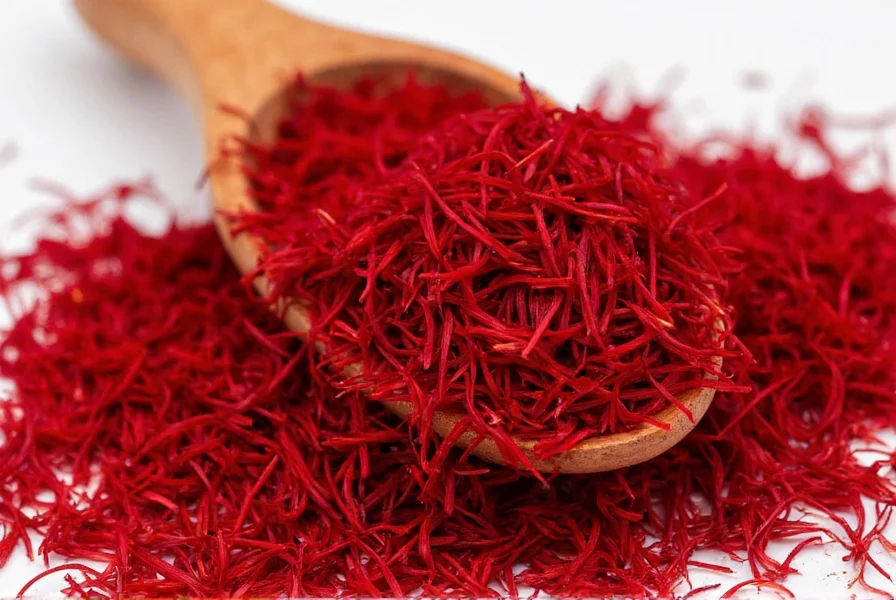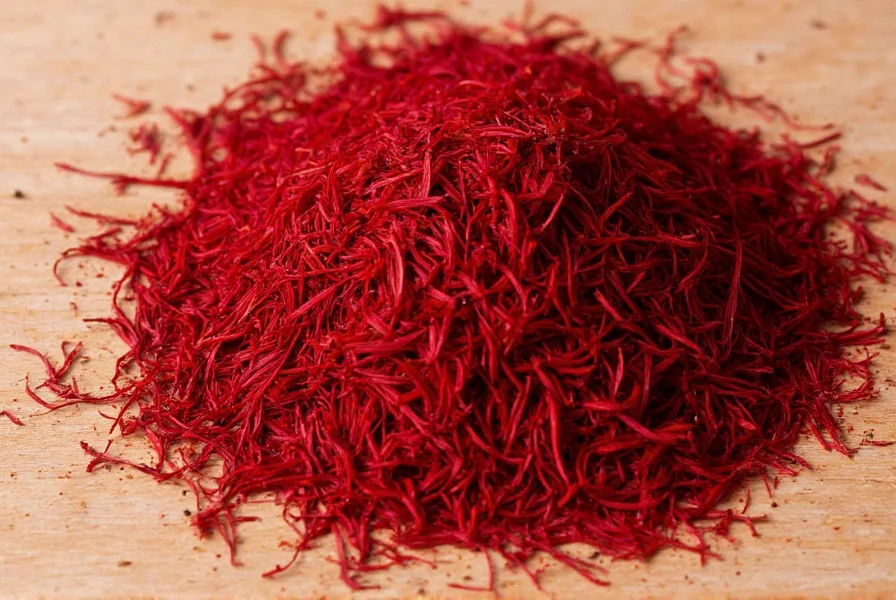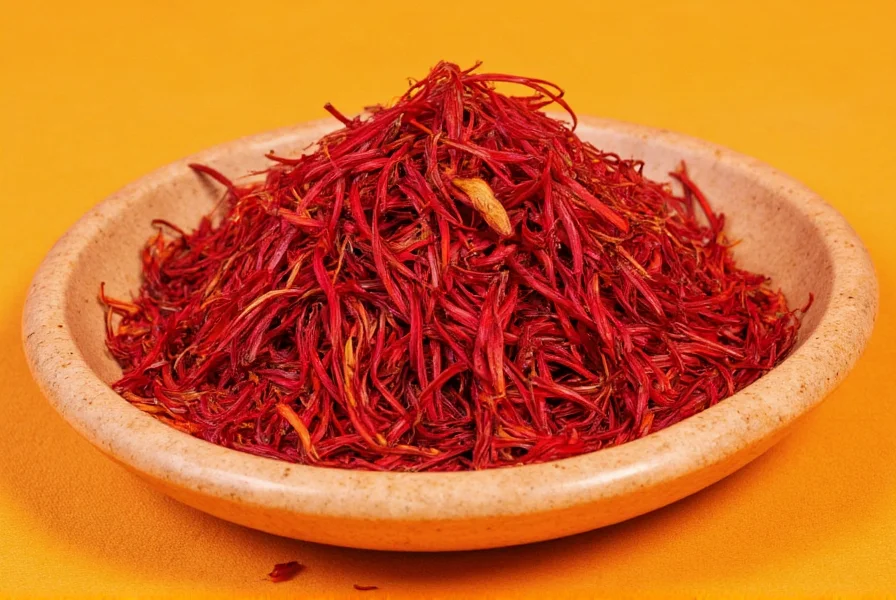When discussing the world's most expensive seasoning, saffron stands unchallenged at the pinnacle of culinary luxury. This crimson-hued spice, derived from the Crocus sativus flower, commands prices that dwarf even the finest vanilla or rare cardamom. The fundamental reason for saffron's extraordinary cost lies in its production process, which remains stubbornly resistant to mechanization despite centuries of cultivation.
The Labor-Intensive Reality of Saffron Production
Understanding why saffron earns the title of most expensive seasoning requires examining its harvesting process. Each crocus flower produces only three stigmas—the thread-like structures we know as saffron. These delicate threads must be carefully plucked by hand during a narrow harvesting window, typically at dawn when the flowers are still closed. This timing prevents damage to the fragile stigmas and preserves their volatile compounds responsible for saffron's distinctive aroma and color.
Consider these staggering production metrics:
| Production Element | Measurement | Significance |
|---|---|---|
| Flowers per pound | 70,000-75,000 | Represents approximately 1 acre of crocus cultivation |
| Stigmas per flower | 3 | Only these crimson threads constitute true saffron |
| Harvesting time window | 2-3 weeks annually | Must occur at precise moment before flowers fully open |
| Harvesting labor | 40 hours per ounce | Entire process must be completed by hand |
Historical Context of the World's Most Valuable Seasoning
Saffron's status as the most expensive seasoning isn't a modern phenomenon. Historical records show that saffron has been prized since ancient times, with references appearing in Assyrian botanical texts from the 7th century BCE. During the Middle Ages, saffron was valued more highly than gold by weight in many European markets, often used as currency or for dowries.
The spice trade routes that carried saffron from its primary growing regions in Persia (modern-day Iran) to European markets contributed significantly to its legendary status. Unlike many spices that could be transported in bulk, saffron's delicate nature required careful handling, further increasing its cost throughout the supply chain.
Comparing Luxury Seasonings: Saffron vs. Other Premium Options
While saffron reigns supreme as the most expensive seasoning globally, several other spices command premium prices due to their rarity or production challenges:
- Vanilla - The second most expensive spice by weight, with premium Madagascar Bourbon vanilla reaching $600 per pound. Its high cost stems from the labor-intensive pollination process required for vanilla orchids.
- Cardamom - Often called the "Queen of Spices," green cardamom can reach $200 per pound. Its expense comes from the challenging harvesting process where pods must be picked individually by hand at precise ripeness.
- Vanilla Tonka Beans - Though restricted in some countries due to coumarin content, these beans can cost $100+ per pound for premium varieties.
- Grains of Paradise - This West African spice has gained popularity as a saffron alternative, with prices reaching $50 per pound.
What separates saffron from these other premium seasonings is the sheer volume of manual labor required per usable unit. While vanilla requires careful hand-pollination, saffron demands complete manual harvesting of each individual stigma from thousands of flowers.
Authenticity Concerns with the World's Most Expensive Seasoning
Given saffron's extraordinary value, the market suffers from significant adulteration issues. Studies suggest that up to 70% of saffron sold globally contains some form of adulteration, from cheaper safflower threads to artificial coloring.
To identify genuine saffron, look for these characteristics:
- Deep crimson threads with slight orange tips
- A distinctive hay-like aroma with subtle metallic notes
- When placed in warm water, authentic saffron releases a golden-yellow color gradually (not immediately)
- Premium saffron should never be bright red throughout (indicates artificial coloring)

Practical Applications of Premium Saffron
Despite its cost, saffron remains a staple in many culinary traditions because a little goes a long way. Professional chefs typically use just 10-20 threads per dish, making a single ounce last for dozens of preparations. The spice's unique flavor profile—earthy with subtle floral notes—cannot be replicated by any substitute.
When working with saffron, proper preparation maximizes its value:
- Crush threads gently with mortar and pestle
- Steep in warm liquid (not hot) for 15-20 minutes before adding to dish
- Use the infused liquid rather than the threads themselves for even distribution
- Store unused saffron in an airtight container away from light

Geographical Indications and Quality Grading
Saffron quality varies significantly based on origin and processing methods. The ISO 3632 international standard classifies saffron into four quality categories based on crocin (color), picrocrocin (taste), and safranal (aroma) content. Category I represents the highest quality, with the most intense coloring strength.
Iran produces approximately 90% of the world's saffron, with the Khorasan region yielding the most prized varieties. Spanish saffron (particularly from La Mancha) and Kashmiri saffron also command premium prices due to their distinctive flavor profiles.
Conclusion: Understanding the True Value of Luxury Seasonings
Saffron's position as the most expensive seasoning in the world reflects not just market forces but the fundamental economics of its production. The human labor required to harvest this delicate spice remains essentially unchanged for millennia, creating a natural price floor that no technological advancement has yet overcome.
For culinary enthusiasts, understanding why saffron commands such extraordinary prices provides deeper appreciation for this ancient spice. Rather than viewing it as merely an expensive ingredient, recognizing the centuries-old craftsmanship embedded in each thread transforms saffron from a luxury item into a connection with culinary history itself.
Why is saffron considered the most expensive seasoning globally?
Saffron is the most expensive seasoning because of its extremely labor-intensive harvesting process. Each crocus flower produces only three stigmas that must be hand-picked at dawn, and it takes approximately 75,000 flowers to produce just one pound of saffron. This manual process hasn't changed significantly in centuries, creating a natural price floor that keeps saffron prices exceptionally high compared to other spices.
How much does genuine saffron typically cost per pound?
High-quality saffron typically costs between $500 and $5,000 per pound, with premium grades sometimes exceeding this range. The price varies based on quality grade (ISO 3632 Category I being the most expensive), origin, and purity. Lower quality or adulterated saffron may sell for less, but genuine, pure saffron always commands premium pricing due to the immense labor required for its production.
What are the key differences between saffron and its less expensive substitutes?
True saffron has a distinctive flavor profile that cannot be replicated by substitutes like safflower or turmeric. Authentic saffron threads are deep crimson with orange tips and release a gradual golden-yellow color when steeped in warm liquid. Substitutes often provide only color without saffron's complex flavor notes of honey, earth, and subtle metallic undertones. While substitutes cost significantly less, they don't deliver the authentic culinary experience of genuine saffron.
How can consumers ensure they're purchasing authentic saffron rather than adulterated product?
To verify authentic saffron, look for threads that are deep crimson with slight orange tips, not uniformly bright red. When steeped in warm water, genuine saffron releases color gradually over 15-20 minutes, not immediately. Purchase from reputable suppliers who provide ISO 3632 grading information and consider buying whole threads rather than powder, which is more easily adulterated. Premium saffron should have a distinctive hay-like aroma with subtle metallic notes, not just a generic floral scent.
What makes saffron worth its high price in culinary applications?
Saffron's value comes from its unique flavor profile and coloring properties that cannot be replicated by any other spice. A small amount (10-20 threads) imparts distinctive golden color and complex flavor notes to dishes. Its culinary importance spans multiple cultures—from Spanish paella to Indian biryani to Persian rice dishes—where it serves as both flavoring and cultural tradition. Professional chefs consider saffron worth the investment because it transforms ordinary dishes into extraordinary culinary experiences with minimal quantity required per serving.











 浙公网安备
33010002000092号
浙公网安备
33010002000092号 浙B2-20120091-4
浙B2-20120091-4